 EN
EN
 PT
PT

The GiocaQuattro series, conceived by Flavio Fogarolo, offers simple didactic board games in order to help children get to know a few first words in English.
Each square card depicts a situation characterised by a noun (a person, animal or object) or by an adjective or verb.
GIOCAQUATTRO – ENGLISH: NOUNS AND ADJECTIVES
With Giocaquattro – English: Nouns and adjectives, players have to match up two cards which have the same noun or the same adjective by putting the corresponding sides together.
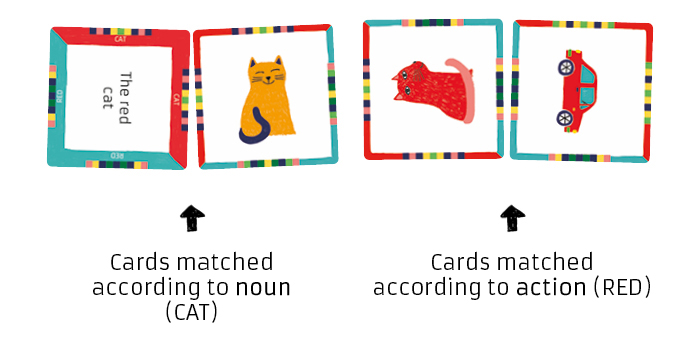
How it works
A card with a picture or text that shows, for example, The red cat, matches with another card depicting or describing the same subject (cat), or, which has a different subject with the same characteristic (red).
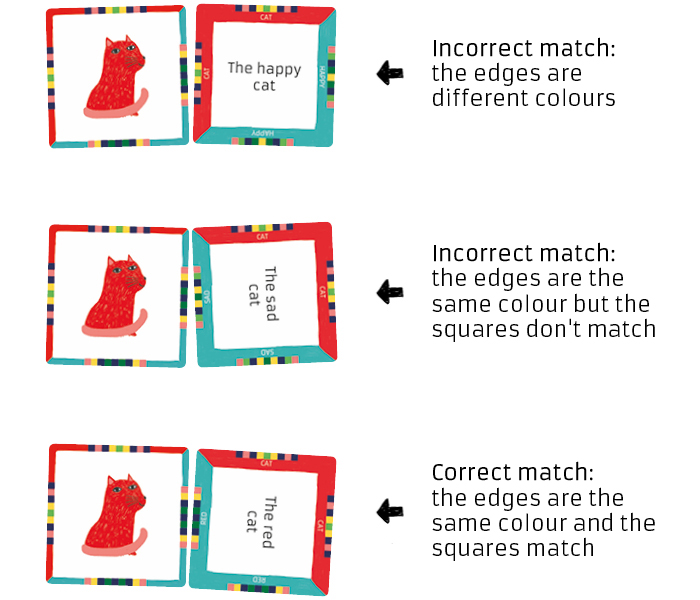
Self-correction
If they are matched correctly, the little squares on the multi-coloured edge will match up and confirmation is immediate. The background colours of the edges help children find the sides to be matched, making the choice easier: red for the noun (cat in this case), blue for the adjective (red).
GIOCAQUATTRO – ENGLISH: NOUNS AND VERBS
With Giocaquattro – English: Nouns and verbs, players have to match up two cards which have the same noun or the same verb by putting the corresponding sides together.
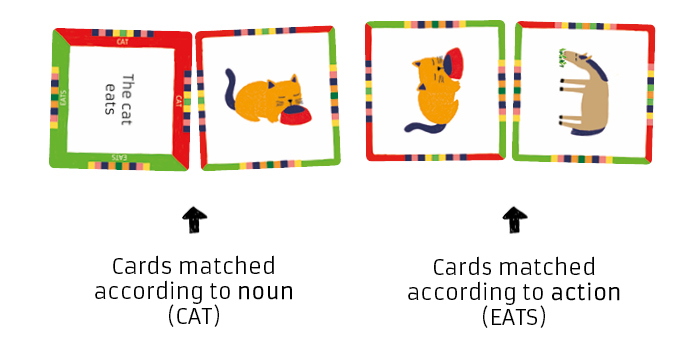
How it works
A card with a picture or text that shows, for example, The cat eats, matches with another card depicting or describing the same subject (cat), or, which has a different subject performing the same action (eats).
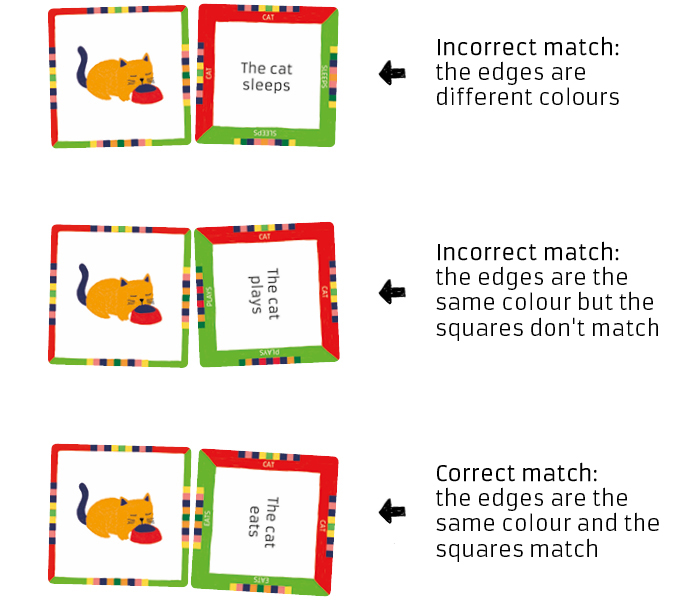
Self-correction
If they are matched correctly, the little squares on the multi-coloured edge will match up and confirmation is immediate. The background colours of the edges help children find the sides to be matched, making the choice easier: red for the noun (cat in this case), green for the adjective (eats).
The games
Here are all the games that can be played with the cards in this series
CLASSIC DOMINOES
Deal the cards out to all the players. The objective is to add your cards to the two ends of the sequence that is formed on the table.
The cards can be matched to any of the free edges at the end of the sequence as long as they touch only a single card in play. If a player has no cards to add, they miss a turn. The winner is the player who finishes their dominoes first.
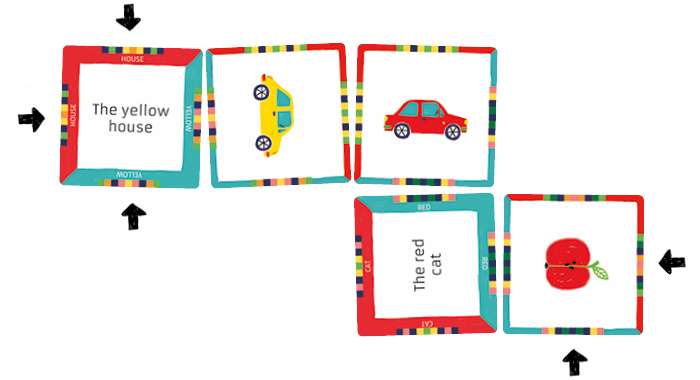
ENGLISH – NOUNS AND ADJECTIVES
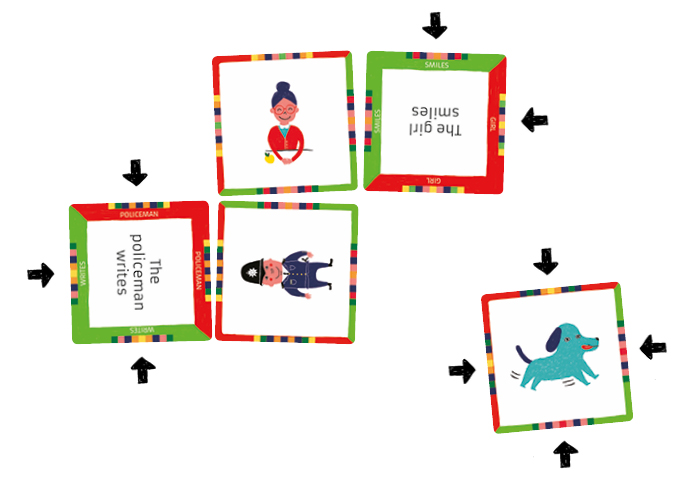
ENGLISH – NOUNS AND VERBS
OPEN DOMINOES
Compared to classic dominoes this is easier because the new cards can also be placed in a position in the middle of the sequence, not only at the ends.
The cards can be matched to any free edges, in the middle of the sequence too, as long as they touch only a single card in play. If a player has no cards to add, they miss a turn (in theory a player should hardly ever have to miss a turn). The winner is the player who finishes their dominoes first.
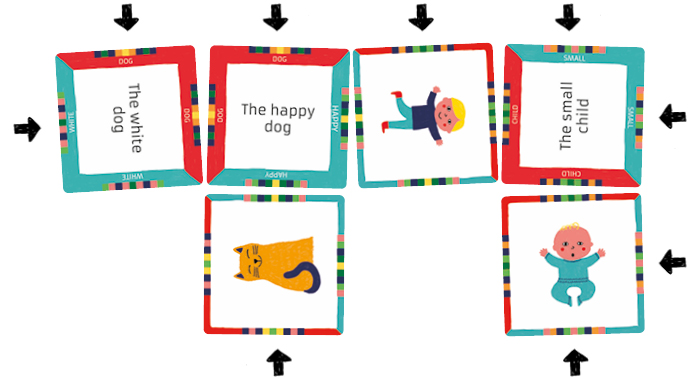
ENGLISH – NOUNS AND ADJECTIVES
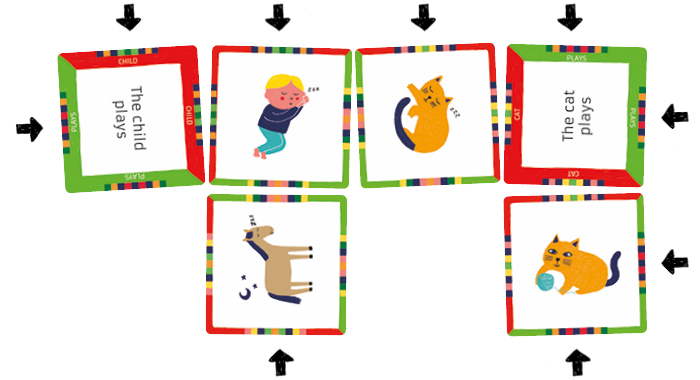
ENGLISH – NOUNS AND VERBS
SNAKE
The game starts by dealing 3 hidden cards to each player and putting one of these face up on the table. The remaining cards, which are face down, stay in a pile which will be needed later to draw from. The objective is to form a snake of 5 cards: the player who adds the fifth card captures the snake and takes it as booty.
Each player, in turn, puts a card on the table. They can add their card to an existing snake (as long as it touches only one card in play) or they can start a new one by putting a card on the table which does not match up with any of the existing snakes.
The other players can check that the card doesn’t match up with an existing snake: if they find that the card can be added to a snake, it must be added to that snake and can no longer be replaced.
Each player, after positioning a card, draws another one from the pack so that they always have 3 cards available.
When the pile is finished, the cards that the players have are used until all of them are placed on the table. The player who has captured the most cards wins (any incomplete snakes on the table do not count).
The various exercises are divided up into worksheets, numbered for ease of use, with concrete and abstract images in order to reduce interferences of a linguistic kind on individual tasks, a characteristic which means the material is particularly suited to individuals who do not know the Italian language.
Instructions on how to use the material with examples are given at the start of each area.
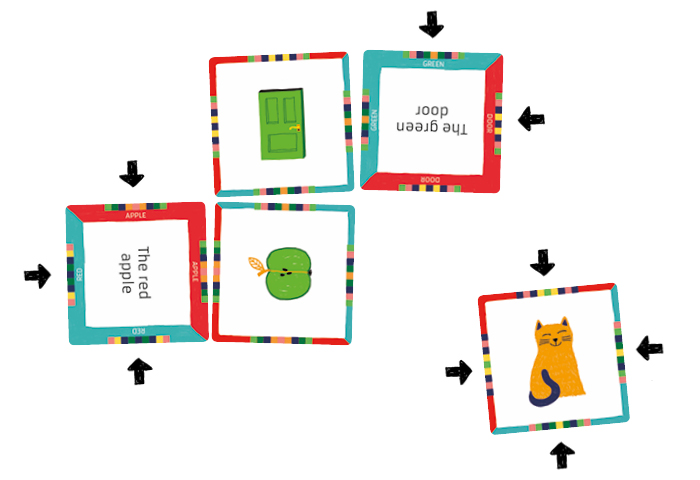
ENGLISH – NOUNS AND ADJECTIVES

ENGLISH – NOUNS AND VERBS